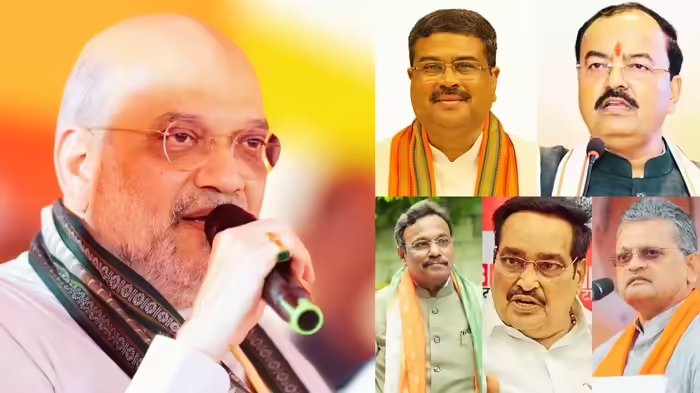
New Delhi/Patna: The results of the Bihar Assembly Election 2025 have sent shockwaves across the political spectrum. Considered the most politically aware state after Uttar Pradesh, Bihar witnessed a sweeping victory for the NDA, leaving the Mahagathbandhan far behind.
The election blueprint crafted by Union Home Minister Amit Shah proved decisive, with every move landing with precision.
Shah had earlier predicted that the NDA would win around 160 seats, but the alliance surpassed even that estimate, securing a commanding lead.
Amit Shah’s Winning Strategy: A Masterclass in Election Management
Known for transforming political campaigns into disciplined, data-driven operations, Amit Shah once again demonstrated why he is regarded as India’s most formidable election strategist.
Here are the five key pillars of Shah’s winning formula:
1. Trust in Zero-Error Leaders
To tighten the BJP’s grip over the Bihar polls, Shah deployed a carefully curated team:
- Dharmendra Pradhan was appointed the central in-charge.
- UP Deputy CM Keshav Prasad Maurya and Union Minister C.R. Patil were brought in as co-in-charges.
- Vinod Tawde, known for his sharp organisational abilities, was stationed in Bihar, reinforcing the ground campaign.
Patil’s data-driven approach, combined with Maurya’s organisational experience and Tawde’s on-ground coordination, helped execute Shah’s strategy flawlessly.
Meanwhile, Gujarat BJP leader Bhikhubhai Dalsaniya oversaw the party’s organisational machinery in Bihar, further strengthening the team.
2. Seamless Coordination Within the NDA
A major priority was ensuring cohesion across NDA partners.
BJP not only improved coordination with JDU, but also aligned with Jitan Ram Manjhi, Chirag Paswan, and Upendra Kushwaha.
This unity helped deliver a strong positive message across Bihar, weakening the Mahagathbandhan’s prospects.
3. Shah Prioritised Bihar Over Gujarat’s Political Turbulence
Even when the entire Gujarat cabinet resigned ahead of Diwali and a major reshuffle took place, Amit Shah remained fully focused on Bihar.
JP Nadda attended the expansion of the Gujarat ministry, but Shah stayed back in Patna, underlining the significance he attached to the Bihar election.
4. Managing 100 Rebels — A Herculean Task
One of Shah’s biggest challenges came from within. Nearly 100 rebel leaders were disgruntled and unwilling to cooperate.
These rebels insisted they would listen only to Amit Shah.
Shah personally met each one of them over two to three days—holding no other events during that period.
Once pacified, the rebels stepped back, preventing vote-cutting in several key constituencies, resulting in crucial wins for BJP and JDU candidates.
5. Neutralising the PK Factor
Political strategist Prashant Kishor (PK) attempted to target Shah through speeches and campaigns, particularly over the issue of where the “factory” for BJP’s leadership would be set up — Gujarat or Bihar.
Shah dismissed PK’s influence outright and ensured that no anti-Gujarat narrative gained traction.
His ground feedback also helped allocate seats to NDA allies precisely where they were strongest, unlike the Mahagathbandhan where VIP and Congress became weak links.
Amit Shah–Narendra Modi Duo Again Demonstrates Its Dominance
The final results reaffirm that in national politics, there is currently no match for the leadership of Prime Minister Narendra Modi and the electoral management of Amit Shah.
Together, they have turned the BJP into a highly efficient election-winning machine, capable of outmaneuvering even the strongest opposition alliances.
Discover more from SD NEWS agency
Subscribe to get the latest posts sent to your email.